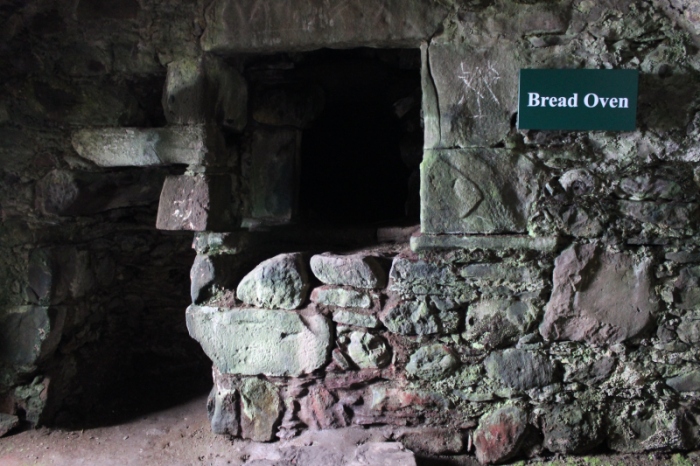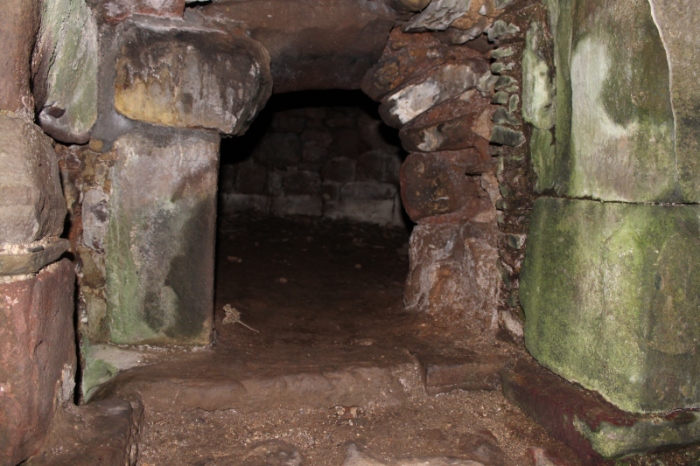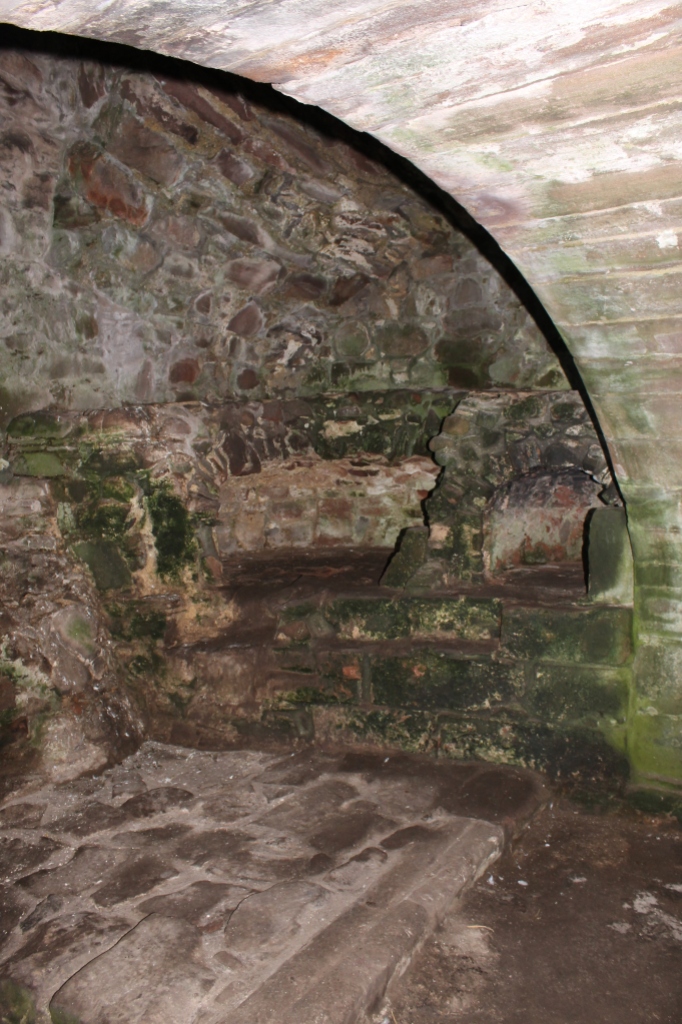This week it’s time for the annual transcribathon hosted by the Early Modern Recipes Online Collective (EMROC) and for the first time Stanford is taking part. Each year, people around the world come together to transcribe a hand-written book of recipes from the early modern period. Manuscript receipt books are great to work with because they provide a really intimate look into early modern lives, especially women’s lives. Many households kept receipt books, which were handed down from generation to generation and each new owner would add their own favourite recipes for food, medicines for people and animals, and other household products like ink and soap.

To celebrate the transcribathon, I wanted to make a recipe from the book we transcribed last year, Jane Dawson’s 17th century receipt book. I was intrigued by a recipe that I transcribed, called Jockelet Cream. One of the best bits of working with early modern cookbooks is figuring out the phonetic spelling that they used – jockelet becomes chocolate if you read it aloud.
The Recipe
Jockelet Creame
boyle a pinte of Creame thicken it with an Egge yolke and mill into it two spoonfulls of the powder of Jockelet take it of as it rises to froth in to what you please[1]
At first I thought that this was a recipe for a hot chocolate drink, and having recently acquired a Mexican molinillo, I was excited to try my hand at it. A closer look at the recipe, however, suggested that this was more like a custard, thickened with egg even though it still retained the froth typical of early European drinking chocolate recipes.

My new molinillo!
A search for other chocolate cream recipes turned up plenty of similar ones from the seventeenth and eighteenth century: from an anonymous Scottish manuscript, Anna Western’s receipt book, a later addition to Elinor Fettiplace’s receipt book, an early eighteenth century receipt book, Elizabeth Moxon’s cookbook (1764) and Susanna Kellet’s coobook (1780). At the same time, there were lots of other flavoured creams too; lemon and orange were very popular but Susanna Kellet for example has recipes for cinnamon, raspberry, lemon, citron, barley, almond and apple creams.
Since receipt books were generally added to over time, sometimes over a number of generations, dating them is often challenging. One recipe in Jane Dawson’s book is dated to 1693, and a late seventeenth-century date is generally consistent with the other recipes. That makes this recipe for chocolate cream relatively early – only a handful of English chocolate recipes are known from before 1700. Lady Anne Fanshawe, the wife of the Spanish ambassador, collected a recipe for drinking chocolate in 1665 and in 1668 the Earl of Sandwich recorded a number of recipes for chocolate including some of the earliest frozen dessert recipes in English.[2] Another recipe attributed to Rhoda Fairfax is probably also from before 1700, and there are two recipes in published cookbooks, one for a beverage and one for ‘Chocolet-puffs’.[3]
In 1702, François Massialot’s The Court and Country Cook (originally published in 1691 as the Cuisinier Roial et Bourgeois) became available with the earliest known recipe for chocolate cream in English.[4]
Chocolate-cream.
Take a Quart of Milk with a quarter of a Pound of Sugar, and boil them together for a quarter of an Hour : Then put one beaten Yolk of an Egg into the Cream, and let it have three or four Walms: Take it off from the Fire, and mix it with some Chocolate, till the Cream has assum’d its colour. Afterwards you may give it three of four Walms more upon the Fire, and, having strain’d it thro’ a Sieve, dress it as pleasure.[5]

The Jane Dawson recipe is different in a few key ways: first, it doesn’t use any sugar so ends up being quite bitter when made with dark chocolate. Dawson was probably using pre-prepared chocolate tablets which were available in England from the 1650s, and they may have been already sweetened with sugar and possibly spiced as well.[6] The other major difference is that Massialot focuses on boiling the chocolate (a walm is an unknown measurement of time boiling[7]) while Dawson emphasises milling and froth. Did the extra boiling make Massialot’s recipe thicker and more custardy? It’s hard to imagine that it thickened much with only one egg yolk and twice as much cream.

Woman making foamy chocolate by pouring it from one vessel to another from a height. Codex Tudela, fol. 3r, c. 1553. [Public domain] via Wikimedia Commons.
Making frothy chocolate drinks was something that the Spanish colonizers learnt in Mesoamerica where a frothy head was produced by pouring the beverage from one vessel to another from a height.
[8] The Spanish later developed a type of wooden whisk called a molinillo which was rotated briskly by rubbing the handle between the palms, and this technology was taken to Europe along with chocolate itself.
[9] Sometimes called a chocolate mill, these wooden whisks could be inserted into elaborate metal or ceramic chocolate pots.

Chocolate tablets for making drinking chocolate in the pot with a molinillo, beside a chocolate cup for drinking it out of, bread and biscuits for dipping. Still Life with Chocolate Service, Luis Egidio Melendez, 1770 [Public Domain] via Wikimedia Commons.
For such a short, easy recipe, there are a lot of unknowns when it comes to Jane Dawson’s chocolate cream. There are all the usual problems of converting measurements, and figuring out how big an early modern egg was, but there is also the question of what the chocolate she used would have been like, and what consistency the final product was supposed to be.
Different recipes, or even different interpretations of very similar recipes produce wildly different results. Marissa Nicosia over at Rare Cooking made a chocolate cream that was thick and rich, like pudding. Kathleen Wall’s recipe calls for beaten egg whites producing a lighter chocolate mousse. Amy Tigner’s students made a kind of chocolate custard which is topped with whipped cream for a layered effect. Another possibility is that the recipe is supposed to be served as a hot drink, more like a historical hot chocolate. While I can’t rule that out, other similar but more detailed recipes for chocolate cream do seem to be served cold in glasses, kind of like a mousse.
Although I used the measurements from Dawson’s recipe, I used the instructions from an anonymous Scottish manuscript from 1722 for clarification.
Chocolate Cream
Boil your Cream, & put in as much Chocolate as will colour it of a good brown Colour, & thicken it as thick as good Cream with ye yolk of an Egg well beaten; then with a Mill mill it up that the Froth may be an Inch above your Glasses or above your Cream in the Glasses. Serve this wt your Orange and Lemon Creams, and they are very gentle Creams.[10]
The instructions are very similar, but a little more detailed. This recipe suggests that the cream does not thicken very much, just to the consistency of ‘good cream’. That fits with my experience, which was that one egg yolk did not provide a lot of thickening. Again, the recipe emphasises frothiness and while I didn’t get a full inch of froth above the cream, I was able to get the froth to kind of set by putting the foam on top of the cream and letting it cool.
Overall, it produced basically what you would expect – a slightly chocolate-flavoured, very bitter, slightly thickened cream which was edible, but not my favourite. I think a little sweetening would have gone a long way, and would be keen to try making it again with a spiced chocolate with cinnamon or chili just to add a bit more interest. I would also add more chocolate, since the flavour was very subtle. It is interesting to wonder whether that is a mismatch between the quantity of Dawson’s two spoonfulls and my own, or whether perhaps she was making the most of a small amount of an expensive ingredient.

[1] Jane Dawson, “Cookbook of Jane Dawson” (Manuscript, 17th Century), 17, V.b. 14, Folger Shakespeare Library.
[2] Kate Loveman, “The Introduction of Chocolate into England: Retailers, Researchers, and Consumers, 1640–1730,” Journal of Social History 47, no. 1 (September 1, 2013): 27–46, https://doi.org/10.1093/jsh/sht050; Sara Pennell, “Recipes and Reception: Tracking ‘New World’ Foodstuffs in Early Modern British Culinary Texts, c. 1650-1750,” Food & History 7, no. 1 (2009): 11–34, https://doi.org/10.1484/J.FOOD.1.100633.
[3] Pennell, “Recipes and Reception: Tracking ‘New World’ Foodstuffs in Early Modern British Culinary Texts, c. 1650-1750.”
[4] Pennell, 24.
[5] François Massialot and J. K, The Court and Country Cook: Giving New and Plain Directions How to Order All Manner of Entertainments … Together with New Instructions for Confecioners … And, How to Prepare Several Sort of Liquors [by F. Massialot] … Translated Out of French Into English by J. K. (London: Printed by W. Onlye, for A. & J. Churchill, at the Black Swan in Pater-noster-row, and M. Gillyflower in Westminster-hall, 1702), 97.
[6] Loveman, “The Introduction of Chocolate into England.”
[7] Oxford English Dictionary, “‘walm, n.1’.,” n.d., https://www.oed.com/view/Entry/225353?rskey=DBFOk1&result=1&isAdvanced=false.
[8] Marcy Norton, Sacred Gifts, Profane Pleasures: A History of Tobacco and Chocolate in the Atlantic World (Ithaca, NY: Cornell University Press, 2008).
[9] Amanda Lange, “Chocolate Preparation and Serving Vessels in Early North America,” in Chocolate: History, Culture and Heritage, ed. Louis E Grivetti and Howard-Yana Shapiro (Hoboken, NJ: John Wiley and Sons, 2009), 129–42.
[10] “‘Large Collection of Choice Recipes for Cookrie, Pastries, Milks, Sauces, Candying, Confectionating, and Preserving of Fruits, Flowers, Etc’, Dated Dumfries, 1722.” (1764 1722), MS 10281, transcription and image available on https://www.nls.uk/year-of-food-and-drink/february.
The Redaction
Jane Dawson’s Chocolate Cream
473 ml (cream
1 egg yolk, beaten
2 tablespoons of dark chocolate, finely grated
- Place the cream in a small saucepan and bring to the boil. Add a little of the hot cream to the beaten egg yolk and whisk, then return the mixture to the saucepan and whisk into the rest of the hot cream. Heat gently until it thickens slightly.
- Dissolve the grated chocolate into the hot cream, and whisk well to form the froth. Pour the liquid into your glasses or moulds, and top with the froth. Carefully move to the refrigerator and allow to cool.






























